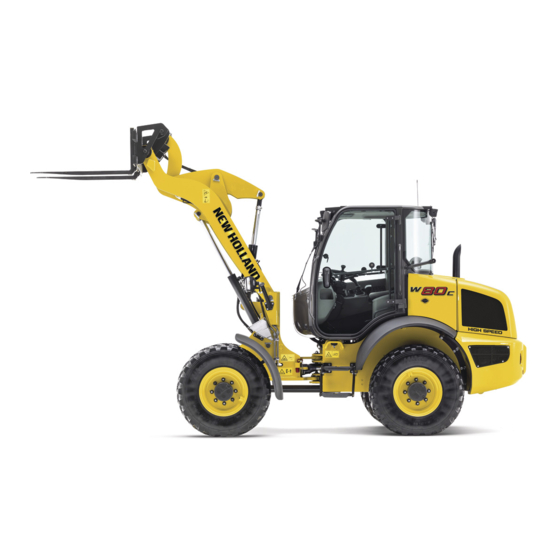
Table of Contents
Advertisement
Quick Links
- 1 Table of Contents
- 2 Basic Instructions - Important Notice Regarding Equipment Servicing
- 3 Product Identification - Machine Components
- 4 Product Identification - Machine Orientation
- 5 Basic Instructions - How to Use the Maintenance Standard and Precautions
- 6 Basic Instructions - Electrical Equipment Precautions
- 7 Product Identification
- Download this manual
Advertisement
Table of Contents

Summarization of Contents
Safety rules
Personal safety
Safety precautions for personnel operating or servicing the machine, including hazard identification and general safety rules.
Emergency
Guidelines for emergency preparedness, including the availability and use of fire extinguishers and first aid kits.
Equipment
Recommended safety equipment and clothing for personnel to wear during operation or maintenance for personal protection.
Engine - Radiator
Safety precautions related to the engine and radiator, covering hot surfaces, pressure release, and fuel handling.
Hydraulic systems
Safety measures for handling high-pressure hydraulic fluid, preventing skin penetration, and protecting eyes from fluid jets.
Hoses and tubes
Recommendations for installing, maintaining, and replacing hoses and tubes to prevent leaks, rupture, and chafing.
O-rings
Procedures for replacing and installing O-rings, ensuring proper seating and lubrication to prevent damage and leakage.
Battery
Safety precautions for handling batteries, including risks of explosion, acid burns, and proper disconnection/reconnection.
Flammable liquids
Safety guidelines for handling flammable liquids like fuel and oil, covering fire prevention, spill containment, and safe refueling.
Tires
Safety checks and procedures for inflating tires, including rim condition, pressure verification, and safe inflation practices.
Cleaning
Guidelines for cleaning machine components, emphasizing safe cleaning agents and avoiding damage to electrical parts and seals.
Waste disposal
Procedures for proper disposal of machine waste materials, including oils, filters, and batteries, to protect the environment.
Foreword - Ecology and the environment
Recommendations for environmental responsibility and safe handling of chemicals and fluids, adhering to local legislation.
Torque
Bolt types
Guidance on using correct tools for tightening and loosening nuts and bolts to prevent injury and ensure proper fit.
Service recommendations for split flange
Steps for correctly installing split flange connections, including cleaning, O-ring placement, and bolt tightening to ensure sealing.
Nut and bolt lockings
Methods for securing nuts and bolts using lock plates, cotter pins, and lock wire to prevent loosening during operation.
Piping joint
Specifications for pipe thread connections and union joints, detailing wrench sizes and tightening torque values.
O-ring seal joint
Procedures for installing O-ring seal joints, including O-ring replacement, seating, and tightening torque specifications.
Screwed-in connection
Information on screwed-in connections, covering thread types and tightening torques for male tapered threads and straight threads.
Seal tape application
Instructions for applying seal tape to threads to prevent leakage, emphasizing proper application technique and thread clearance.
Low-pressure-hose clamp tightening torque
Tightening torque specifications for different types of low-pressure hose clamps, including T-bolt and worm gear types for secure attachment.
Connecting hose
Guidelines for connecting hoses, stressing the use of genuine parts, avoiding kinks, and preventing rubbing for reliable operation.
Other cautions to be exercised
PARTS LIABLE TO DEGRADE
Information on rubber products like hoses and seals that degrade over time and require regular replacement to ensure safety.
PARTS REQUIRING REGULAR REPLACEMENT
Designation of critical Very Important Parts (V.I.P.) that require regular replacement to ensure machine safety and reliability.
INSPECTION AND REPLACEMENT OF OILS AND GREASES
Importance of familiarizing oneself with safe handling, cautions, and inspection/lubrication procedures for oils and greases.
Product identification
Model, serial number, and year of manufacture
Instructions on recording and using machine identification numbers (PIN) for ordering parts, obtaining information, or reporting theft.
Machine identification
Information on the location of the Product Identification Number (PIN) plate on the machine for identification purposes.
Roll-Over Protective Structure/Falling Object Protective Structure (ROPS/FOPS)
Information regarding the location of the serial number plate for the Roll-Over Protective Structure (ROPS/FOPS).
Engine make and model
Engine serial number
Location of the engine serial number plate and the main information it contains about the engine.
Axle
Information on the location of the serial number plate on the axle cross member for identification.















Need help?
Do you have a question about the W70C Tier4 and is the answer not in the manual?
Questions and answers